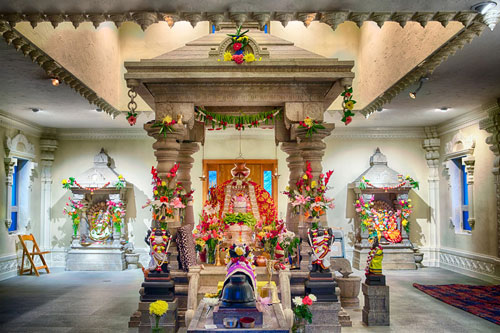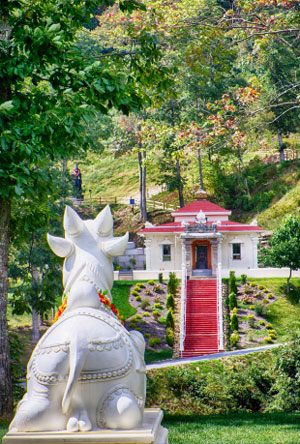There are many things that can prevent a temple from being a Vedic temple. Firstly, Sthapatya Veda (Vastu) must be strictly adhered to. It must be understood that the technology has to be followed with scientific precision. People understand this with respect to mechanics or electronics. However, because the temple is dealing with a far more subtle level of science (Vedic science), the guidelines must be executed with even greater precision than with an automobile or cell phone. All too often, this is not done. Deities for different types of temples are mixed under one roof, or improper materials are used, or any other of a countless number of Vastu guidelines are simply not utilized. Everybody knows that if you do that with a car or cell phone, it will just not work. Few understand that with respect to a temple.

A second reason a temple may not be a Vedic temple is because of cultural pressure. As Adi Shankara said, “The Knowledge must be purified by every generation.” Otherwise, superstitions or economic, cultural, and personal distortions just naturally creep in. This has been the fate of many Hindu temples. People may want a certain deity added to a temple because their temple back home had that deity. Oftentimes, such pressures force the temple to move in a non-Vedic direction.
Even in India, temples have built additions without following the mathematical guidelines for the original temple. Having the addition adhere to Sthapatya Veda is not enough. Different Vedic specifications can be correctly used for different temples. However, they must not be combined in the same one temple.
 When we interviewed Vedic pandits for Sri Somesvara Temple, they were both shocked and delighted when we told them that the pandits, not the donors, will run the temples at Mount Soma. The pandits are the ones with the knowledge, yet they rarely run a temple without being pressured by the donors. That pressure is enough to prevent a temple from being a Vedic temple.
When we interviewed Vedic pandits for Sri Somesvara Temple, they were both shocked and delighted when we told them that the pandits, not the donors, will run the temples at Mount Soma. The pandits are the ones with the knowledge, yet they rarely run a temple without being pressured by the donors. That pressure is enough to prevent a temple from being a Vedic temple.
Surprisingly, many of the requirements of a Vedic temple are considered to be old-fashioned or no longer appropriate, and are therefore dismissed. This is common among temple attendees in both the U.S. and India. That is enough to compromise the effectiveness of the temple. It is easy to consider a temple to be a Vedic temple, yet true Vedic temples are far rarer than one may think.
Vedic technology has the potential to bring fulfillment and abundance to all aspects of life. One may wonder then, why India, the land of the Veda, has such poverty. If Vedic principles had been adhered to properly throughout India’s history, the integrity of the culture would be invincible. The current state of affairs stands as proof that the Knowledge unfortunately has been compromised.
As Adi Shankara said, “Vedic Knowledge must be purified by every generation.” When the purity of the Knowledge is maintained, all of life will reach its full potential. Temples will shine more brightly as beacon lights for all of humanity. Life will rise to the level of prosperity, peace, abundance, and happiness.
As predicted by Lord Krishna, we are now entering that time of prosperity… Sat Yuga in the midst of Kali Yuga. We, at Mount Soma, are committed to bringing this forth.

